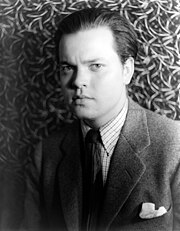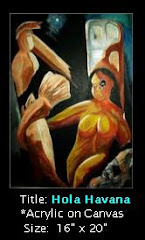With Halloween rapidly approaching, this is the time of year we look at some of sci-fi and horror offerings of radio, early TV, and the movies. None is more famous than the infamous `War of The Worlds’ broadcast of Halloween night, 1938.
Although this Orson Welles broadcast was the subject of one of my earlier blogs, written back in 2008, I’ve an interesting addendum for classic TV fans.
A Studio One presentation called `The Night America Trembled’.
But first, a brief revisiting of the original radio broadcast.
Among Halloween radio broadcasts, there is none better remembered than the Mercury Theatre's War of the Worlds, broadcast on Oct 30st, 1938. My parents were listening that Sunday night, and having tuned in from the beginning, knew this was a dramatic presentation.
Anyone who listened to the first 2 minutes of the show heard the introduction by producer and star Orson Welles. But the next disclaimer wouldn’t come until 40 minutes into the show.
Orson Welles
The Mercury theatre – while a critical success – was considered a a bit of a `highbrow’ show, and had far fewer listeners than their competitor on NBC, the popular Chase and Sanborn Hour with Edgar Bergen & Charlie McCarthy.
So the truth is, most of the country wasn’t even listening that night.
Those that did tune in late, however, found that their local CBS station was broadcasting a program of `dance music by Ramon Raquello’ and his orchestra instead of the Mercury Theatre.
Within moments, however, there would be a simulated `news flash', indicating that astronomers had detected explosions of `hydrogen gas' on the planet Mars.
With increasing frequency (far too fast, but hey, it was only an hour show), more news flashes would break into the `music program'.
First, with an interview with an `astronomer' named Richard Pearson (quite obviously voiced by Orson Welles), who discounts any concerns over Mars being inhabited.
Within seconds, however, there are reports of seismic activity in New Jersey, and the next 30 minutes are a series of flash news reports covering the landing of a space craft in Grovers Mill, New Jersey, and its subsequent attack on the people there.
Soon New York City is under attack by "five great machines" wading across the Hudson River.
Now, the story goes that more than a million people believed this radio broadcast to be real. I doubt that.
There were disclaimers during the shows intermission, a full disclamer in the first two minutes, and quite frankly it has the `sound and feel' of a radio drama.
Anyone alarmed by this broadcast would certainly have checked other stations to see if they, too, were carrying the`news'. The next day, there was a great to-do make over the broadcast, and recriminations against Welles and his radio troop.
While the `panic' caused by this show was probably exaggerated, some people did apparently take it to be real. In any event, legend or fact, it is a piece of history now.
Listen to the most famous Halloween radio broadcast of them all.
Twenty years after that famous broadcast, Studio One opened their 10th season with a dramatic re-enactment of that broadcast, and the reaction of America.
Narrated by the most famous newsman of the era, Edward R. Murrow, this was a prestigious presentation that captures the mood of the nation in those nervous years just prior to World War II.
You’ll spot a lot of young, not-yet-quite famous actors in the cast including Ed Asner, John Astin, Vincent Gardenia, James Coburn, Warren Oates and Warren Beatty. The `stars’ of this production, however, are Ed Murrow and Alexander Scourby.
The Night America Trembled
Studio One 10x01 The Night America Trembled
This was the film debut of both John Astin and James Coburn, both destined to stardom in the decade to come.
As you watch, remember that this was live television, with no chances for re-takes, no post-production editing. This was acting (and directing) without a net. And something that few TV shows dare to attempt today.
The days of live drama were nearly at an end by 1958, with video tape and film soon to replace the `stage bound’ production so common during Televisions first decade.
The original radio show, followed by the TV re-enactment, would make a fine (and educational) evenings’ double feature in the days ahead.









No comments:
Post a Comment